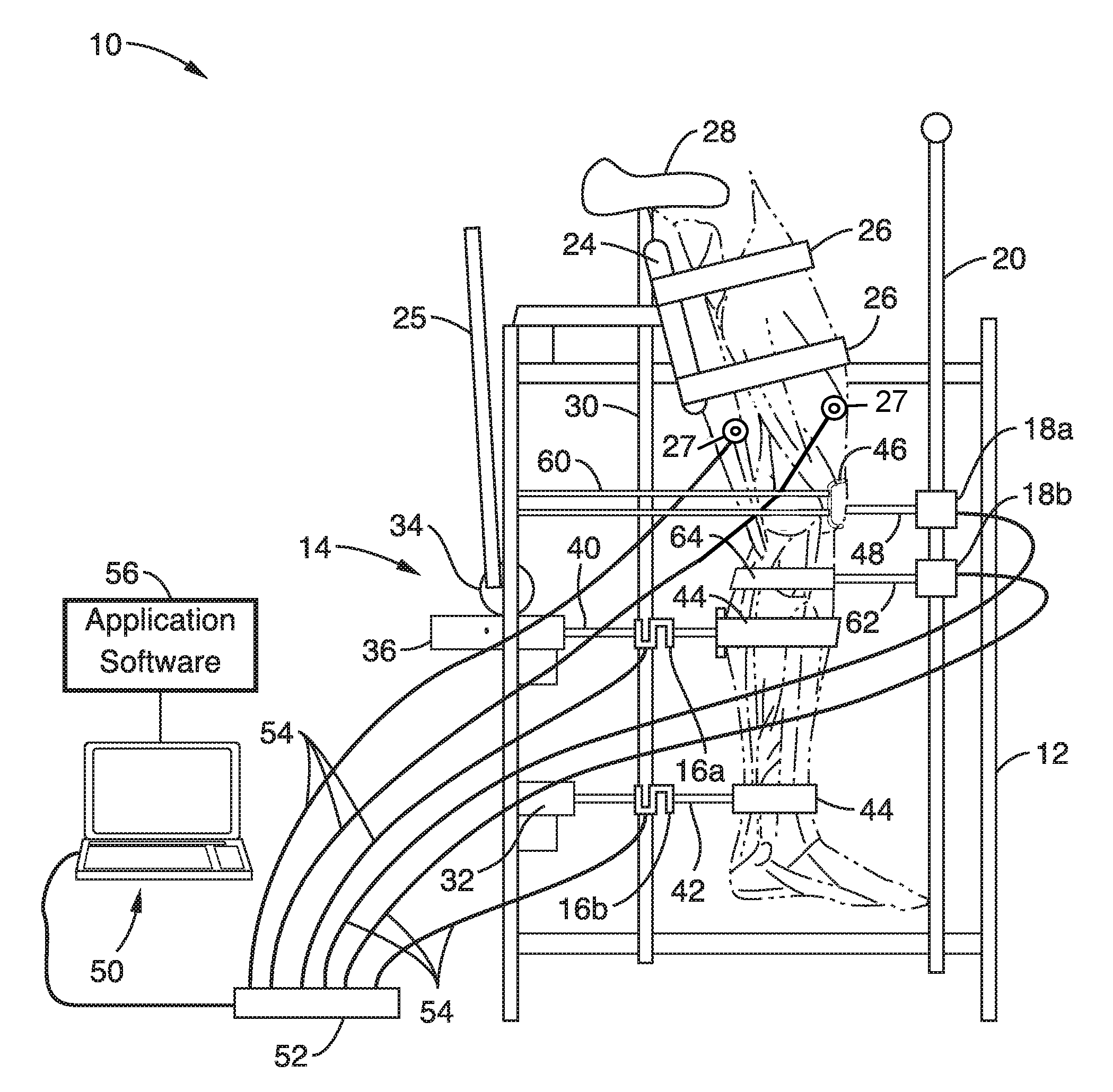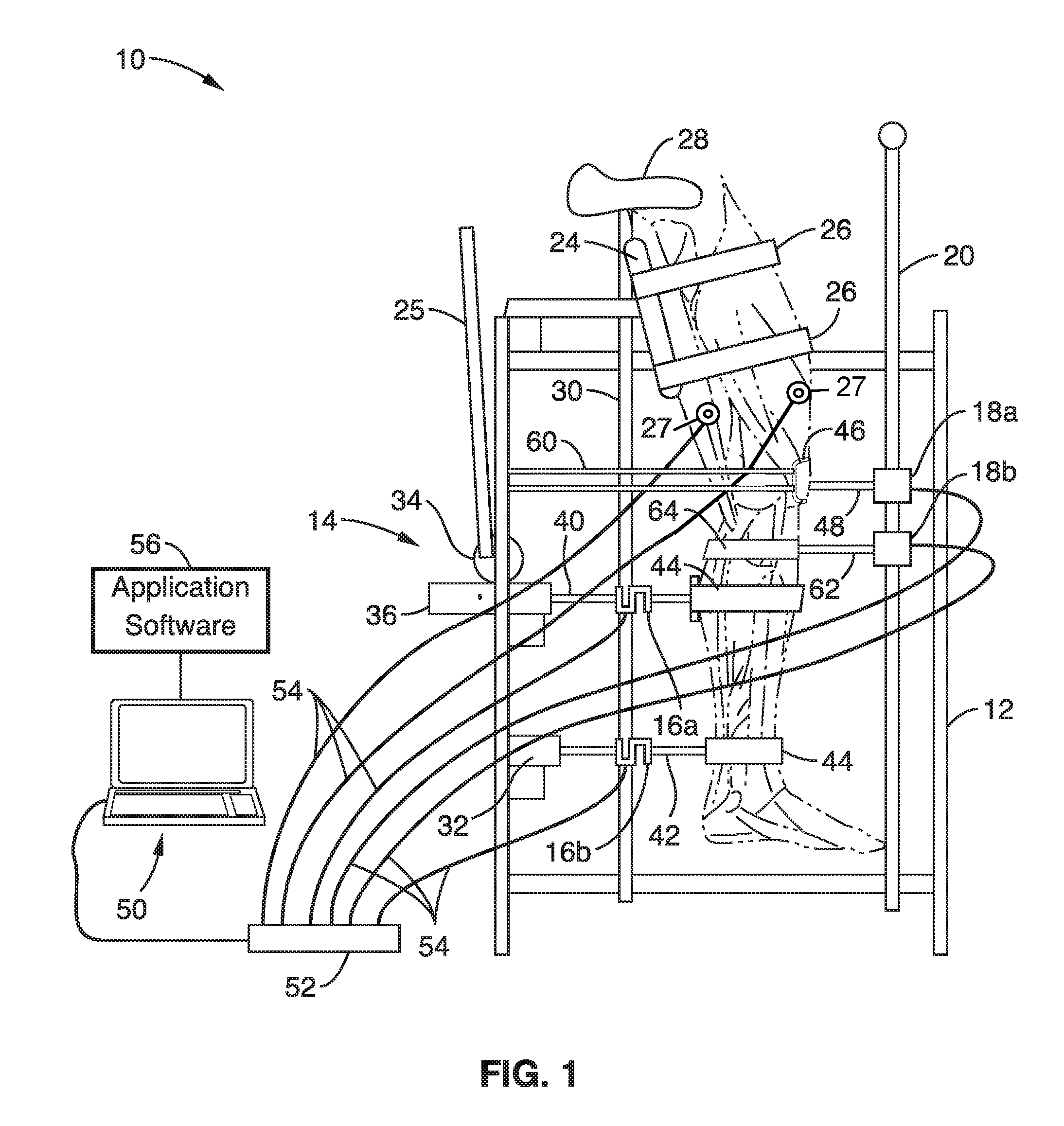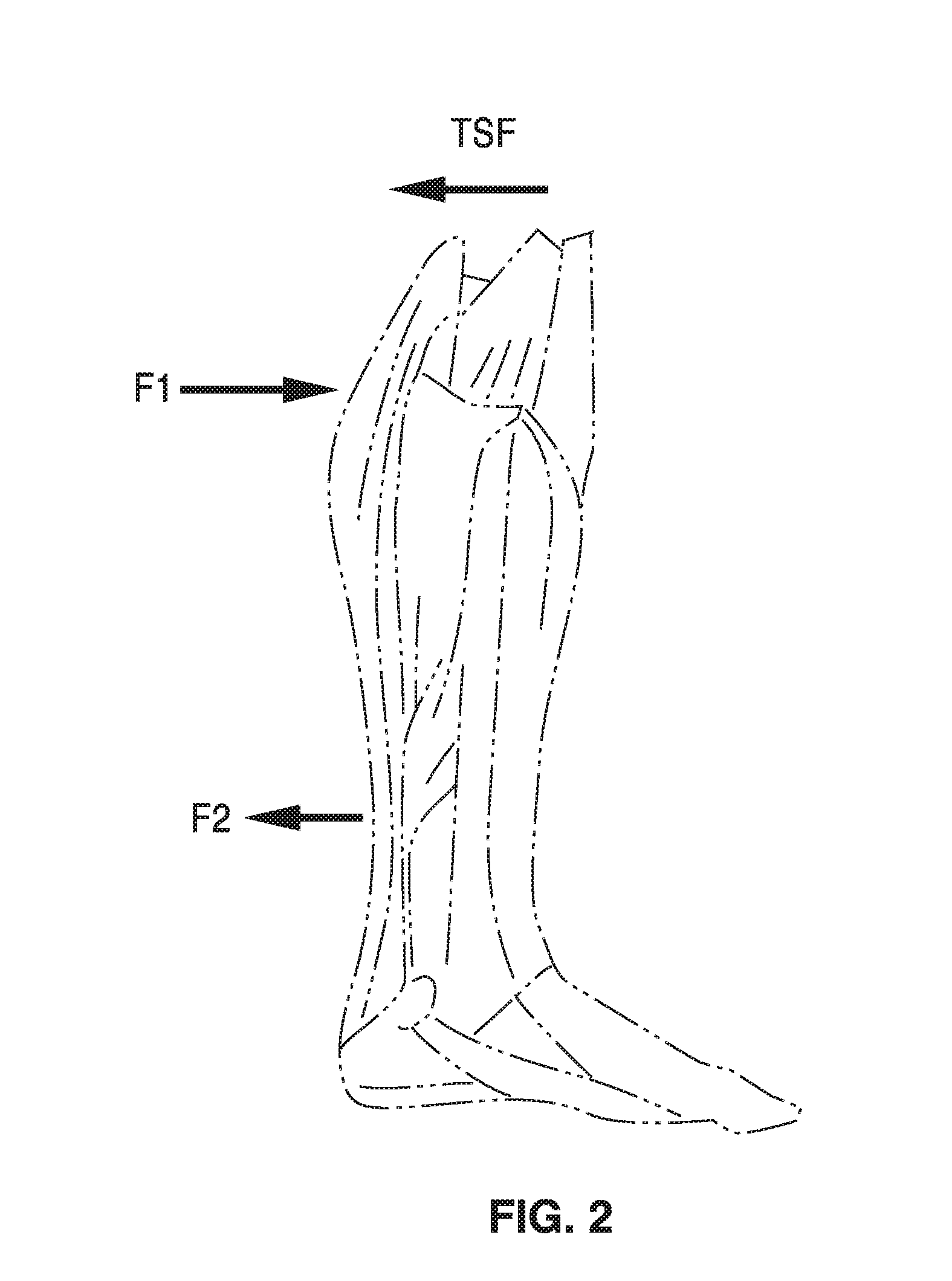Diagnostic knee arthrometer for detecting acl structural changes
- Summary
- Abstract
- Description
- Claims
- Application Information
AI Technical Summary
Benefits of technology
Problems solved by technology
Method used
Image
Examples
example 1
[0040]Measuring the anterior displacement of the tibia relative to the femur can be problematic due to how devices are attached to the body and forces applied, but the novel attachment system of knee arthrometer apparatus 10 eliminates many of these problems. It was found that the key to an accurate measurement was to provide a relatively constant force against the bone where the displacement measurements are made. The string potentiometers 18a, 18b provide a relatively constant retraction force. The force at the attachment location of potentiometer 18b (FIG. 1) remains relatively constant during any displacement of the lower leg, therefore giving reliable measures.
[0041]Tracking the displacement of the femur is more difficult. In a preferred configuration, patella loops were used that could encapsulate the patella, but be secured to the femur. It was found the attachment means of potentiometer 18a (FIG. 1) provides a relatively constant force on the femur that does not change durin...
example 2
[0044]We next tested the repeatability of the knee arthrometer apparatus 10 for making knee laxity measurements. Fifteen subjects were tested hourly for five hours and allowed only to work at a computer and take short walking breaks. Right knee laxity was determined each hour. ACL force-deformation curves resulting from two tests separated by an hour are illustrated in FIG. 3A and FIG. 3B, respectively. FIG. 3A and FIG. 3B show the estimated ACL force deformation profile during ˜20 anterior-posterior loading cycles for a subject tested at two different times. Similar profiles were obtained for each test. The average knee laxity within each subject varied by less than 0.5 mm and showed no trend. The above results confirm that the knee arthrometer apparatus 10 of the present description can reliably measure knee laxity to within 0.5 mm.
example 3
[0045]The knee arthrometer apparatus 10 was also used to acquire preliminary data pertaining to the specific theory that repeated bouts of strenuous exercise can lead to laxity changes in the knee, reflective of structural alterations (i.e. damage) in the ACL. Before presenting results from these tests, a brief description of the rationale supporting overuse mechanisms of catastrophic ACL injury is warranted.
[0046]The basic mechanisms of ACL injuries incurred during non-contact movement that a person has performed many times previously without incident are not understood, but there is evidence supporting overuse mechanisms, e.g. that micro-trauma, or selective fiber disruption, of the human ACL may be caused by a rapid increase in training load, frequency, and / or duration. A ligament may be able to heal certain levels of micro-damage if given sufficient recovery time. However, if strenuous activity occurs at a frequency that creates micro-damage faster than it can be repaired by the...
PUM
 Login to view more
Login to view more Abstract
Description
Claims
Application Information
 Login to view more
Login to view more - R&D Engineer
- R&D Manager
- IP Professional
- Industry Leading Data Capabilities
- Powerful AI technology
- Patent DNA Extraction
Browse by: Latest US Patents, China's latest patents, Technical Efficacy Thesaurus, Application Domain, Technology Topic.
© 2024 PatSnap. All rights reserved.Legal|Privacy policy|Modern Slavery Act Transparency Statement|Sitemap



